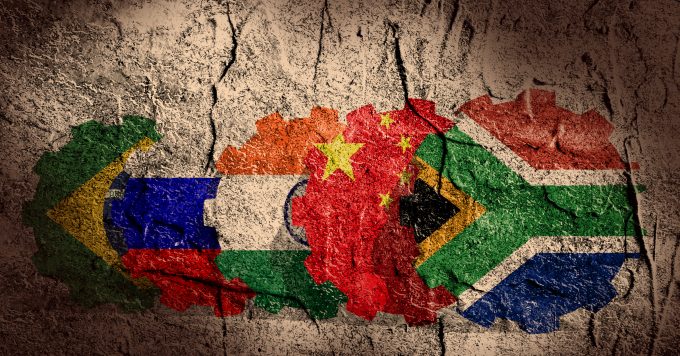Philadelphia International set to take bigger cargo slice
Philadelphia International Airport (PHL) has a significant amount of cargo in its catchment area to ...
TFII: SOLID AS USUALMAERSK: WEAKENINGF: FALLING OFF A CLIFFAAPL: 'BOTTLENECK IN MAINLAND CHINA'AAPL: CHINA TRENDSDHL: GROWTH CAPEXR: ANOTHER SOLID DELIVERYMFT: HERE COMES THE FALLDSV: LOOK AT SCHENKER PERFORMANCEUPS: A WAVE OF DOWNGRADES DSV: BARGAIN BINKNX: EARNINGS OUTODFL: RISING AND FALLING AND THEN RISING
TFII: SOLID AS USUALMAERSK: WEAKENINGF: FALLING OFF A CLIFFAAPL: 'BOTTLENECK IN MAINLAND CHINA'AAPL: CHINA TRENDSDHL: GROWTH CAPEXR: ANOTHER SOLID DELIVERYMFT: HERE COMES THE FALLDSV: LOOK AT SCHENKER PERFORMANCEUPS: A WAVE OF DOWNGRADES DSV: BARGAIN BINKNX: EARNINGS OUTODFL: RISING AND FALLING AND THEN RISING

BRICS (Brazil, Russia, India, China and South Africa), the trade bloc of emerging economies, is expanding its market reach beyond the west, amid slowing demand.
At a summit in Johannesburg this week, the five nations voted to bring six more countries into the fold – Argentina, Egypt, Ethiopia, Iran, Saudi Arabia and the UAE.
“The global growth momentum has weakened and the economic prospects have declined, owing to trade fragmentation, prolonged high inflation, tighter global financial conditions and in particular the increase in interest rates in advanced economies, geopolitical tensions and increased debt vulnerabilities,” the group said.
The bloc was established in 2009, with South Africa joining in 2010. The latest BRICS expansion comes amid widespread forecasts that emerging economies would grow faster than mature markets caught up in persisting inflation and geopolitical headwinds.
By volume, China and India have traditionally dominated trade among the BRICS countries. According to available data, between January and July this year, China’s intra-BRICS trade expanded 19% year on year, to some $331bn, representing approximately 10% of its total foreign trade. India reported more than $100bn in member nation trade last year.
And efforts have begun among BRICS members to develop alternative cross-border “non-dollar” payment systems, to sidestep the Swift network, after trade flows to/from Russia hit a roadblock with Ukraine invasion-related western sanctions.
China and India have significant trading interests with all the new BRICS entrants and, under the common platform, they will attempt to grab more opportunities through shared efforts. BRICS collectively accounts for some 26% of global GDP and is projected to reach about 37% at the expanded scale.
“With each of the BRICS members regional heavyweights in their own backyards, its development into the major global economic and trade powerhouse has every potential of manifesting itself,” said Chris Devonshire-Ellis, chair of consulting firm Dezan Shira & Associates.
“It represents a huge consumer market, having a large middle-class, natural resources, good communication and networks, a sound legal system and modern infrastructure.”
Transport industry observers generally believe the BRICS expansion will drive logistics demand across the territories as trade volumes ramp up and investors increasingly target growing and resilient markets.
Amar More, CEO of Mumbai-based Kale Logistics Solutions, told The Loadstar that, given BRIC’s growth potential, it could become the dominant economic bloc by 2050.
He said: “The past two decades have resulted in changes in the distribution of power and growth points in the global economy, reflected in the increasing economic power of emerging market economies,. The broader bloc will create higher growth, thus influencing tradelanes, logistics policies and initiatives.”
Also spotting this growth potential, container carriers have expanded connections between the Middle East and India in recent months. And there has been almost frenzied network expansion on intra-Asia trades, as trade diversification within the continent gains ground.
Comment on this article